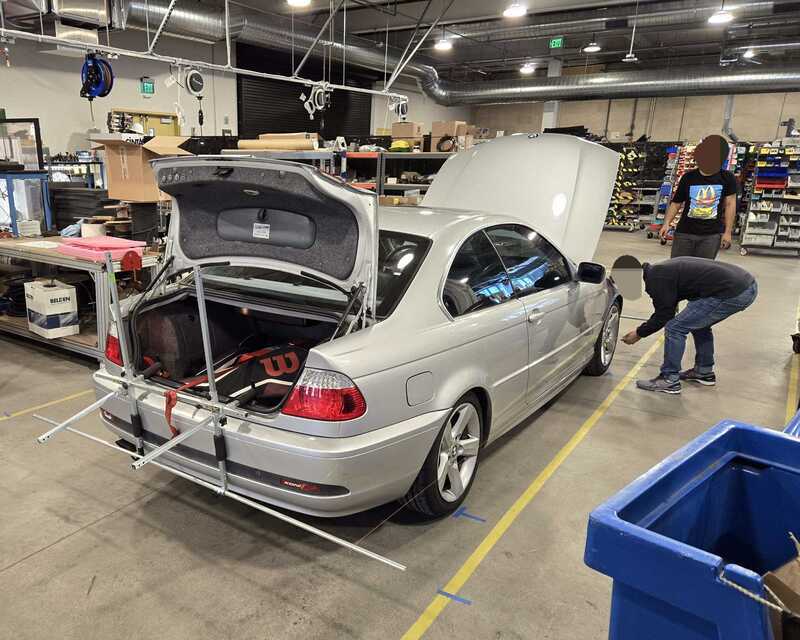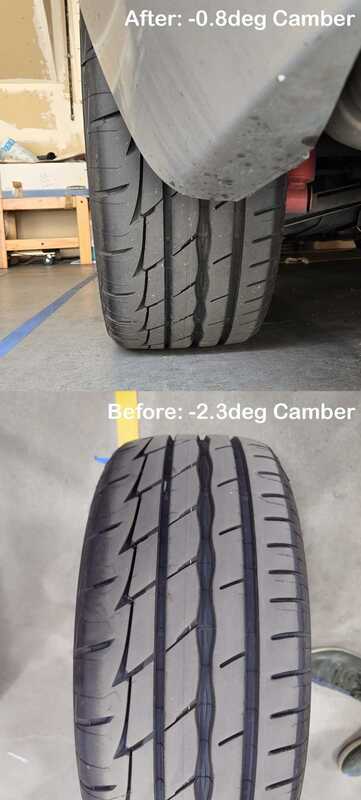We had recently put some new tires on the E46 since the old set was 7 years old, and we noticed all 4 were wearing unevenly. The outside tread still has some life, but the inside was on the wear bars indicative of overly negative camber. So after we put the new Firestone Indy 500s on, we opted to do an alignment.

We wanted to learn the process ourselves, and luckily I have a racecar friend that has a DIY set. We found some shop space with level ground which saved a lot of time, and set up the string bars on either ends of the car. Then, after making sure the strings measure equidistant to the centers of the wheel with the steering wheel level at the center, we could measure the toe of each corner. The camber was measured with a magnetic level stuck on each brake rotor surface. The toe ended up being okay, roughly 0 at each corner. The camber was reading around -1.2-1.3 up front, and -2.3 in the rear. That matched our observations, the tires weren’t wearing too quickly, just rather unevenly. So we only adjusted the rear camber up to the max possible with the lower arm eccentric washer, to about -0.8 on each corner. The front strut pins would need to be knocked out to change front camber, and we felt -1.2 deg was acceptable.

This shows tire wear pattern before and after adjustment. The contact patch appears to have shifted outward by about 3/4”, which is quite significant. While there is still a sliver of space to the edge of the sidewall, this is good to give some space for when the body rolls under cornering. Looks like the camber change did its job, and these new tires should wear much better with a more neutral setup. Objectively, the vehicle feels more planted and stable at speed, and less influenced by ruts in the pavement. We probably won’t be tracking the car until we address the engine and cooling system, so this setup is good for highway/city driving now.